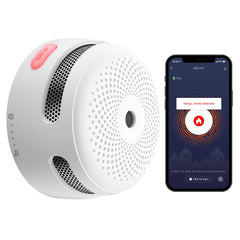How to Choose a Home Fire Extinguisher
Fri, Jul 24, 2020
A home fire extinguisher is one of the major safety measures for one’s home. Having and setting up a fire extinguisher is a must for your home premises. Which extinguisher you should choose depends on the whereabouts of your using it and on what type of fire. Once you know the types of home fire extinguishers, choosing the perfect one should not be so hard for you. Also, there is another fact while choosing- the suitable size of the home fire extinguisher. In this article, we have discussed the types and sizes of home fire extinguishers. We have also added a guide of ‘how to use a fire extinguisher’ as well. Let’s start.
Choosing a Home Fire Extinguisher
As we have already mentioned, choosing fire extinguishers depends mainly on a couple of matters- the type of fire extinguisher and the size of it. Let’s get started-
1. Fire Extinguisher Types
They are differentiated on the basis of what fire type they extinguish. There are 3 types of fire extinguishers based on that, labeled as A, B, and C.
Type A: Here, ‘A’ stands for Ash. This type of extinguisher is used to extinguish standard combustibles. That includes papers, woods, clothes, and practically everything that is non-metal. That's all that burns, leaving ash.
Type B: ‘B’ stands for Barrel here. This type of fire extinguishers put out fires from flammable liquids. Those include oil, gasoline, grease- which comes in barrels.
Type C: Here, ‘C’ is for Charge. Charge essentially means electrical charges. That is to say, this type of extinguishers put out fires from electrical sources.
While buying home fire extinguishers, look for the letter- A, or B, or C and choose the one that can serve you the essential safety measure. However, you will find numbers before these letters in the label print of the extinguishers. These numbers indicate the classification rating of the extinguisher. The higher a label number is, the more is the effectiveness of that extinguisher against its selective-fire type.
2. Fire Extinguisher Size
It may seem that bigger extinguishers are better. But it’s not essential. And smaller extinguishers are preferred over the bigger ones sometimes, as the bigger ones are very heavy to use properly. You should choose the size depending on where you put it and on what purpose.
- We’ll suggest you select an extinguisher of 5-10 pounds for your home workshop or garage. We would recommend it on having electrical equipments, flammables,
- For your laundry room or kitchen, you should use a lighter extinguisher. Let’s say, a home fire extinguisher of 2.5 lb.
- If you want to buy and use one in your car, you can choose either one of 2.5 pounds extinguisher or a 5 lb. one. That is too with a mounting hardware so that it can come handy in need.
How to Use Fire Extinguishers
You are not done only with buying a home fire extinguisher. You should know the use of it too. The most known way to learn and remember how to use a home fire extinguisher is following the acronym “PASS”. Let’s elaborate.
P= First step is to pull the extinguisher’s pin. Hold its nozzle further away from your body.
A= Then, aim low at the firebase, commonly where the fire source is.
S= After that, squeeze the extinguisher’s lever slowly as you maintain a perfectly controlled pace at the same time.
S= Finally, sweep the extinguisher’s nozzle from one side to another in the direction of the fire.
Usually, a user manual with instructions on using the extinguisher comes with it. Read carefully and follow the instructions accordingly.
- Typically, there are trainers in the local or community fire departments to assist the citizens with fire safety issues including fire extinguisher selecting, mounting, testing, maintaining, and disposal.
- If you cannot locate an extinguisher during an emergency, or if it is used up before the flame is under control, you can still put out the fire using improvised techniques. That involves using a blanket to smother the fire, or a sand-full bucket, even a quart-gallon of water from the tap on the fire!
- At least 1 fire extinguisher each floor is recommended by the National Fire Protection Association.
- However, even though the fire code ‘NFPA1’ does not mandate an extinguisher for the dwelling of each single-family, there is still no reasonable excuse to not have one at least, and municipal councils may need more than one or at least one as per local codes.
- The thumb rule for experts who install extinguishers is setting up type A home fire extinguishers for ordinary and light fires within the range of 75 feet, anywhere inside of a building, and type B extinguishers within the range of 30 feet for ordinary hazardous fire types.

X-Sense XS01-WT Wi-Fi Smoke Detector
- You’ll receive a real-time notification on your smartphone whenever an alarm sounds.
- Continuously checks its battery status and Wi-Fi connection.
- Allows you to silence any annoying alarms via the app.
- Upgraded photoelectric sensor significantly increases the alarm’s sensitivity.
- Easy to install the smoke alarm and connect it to Wi-Fi in a few minutes.
$36.99 $39.99







